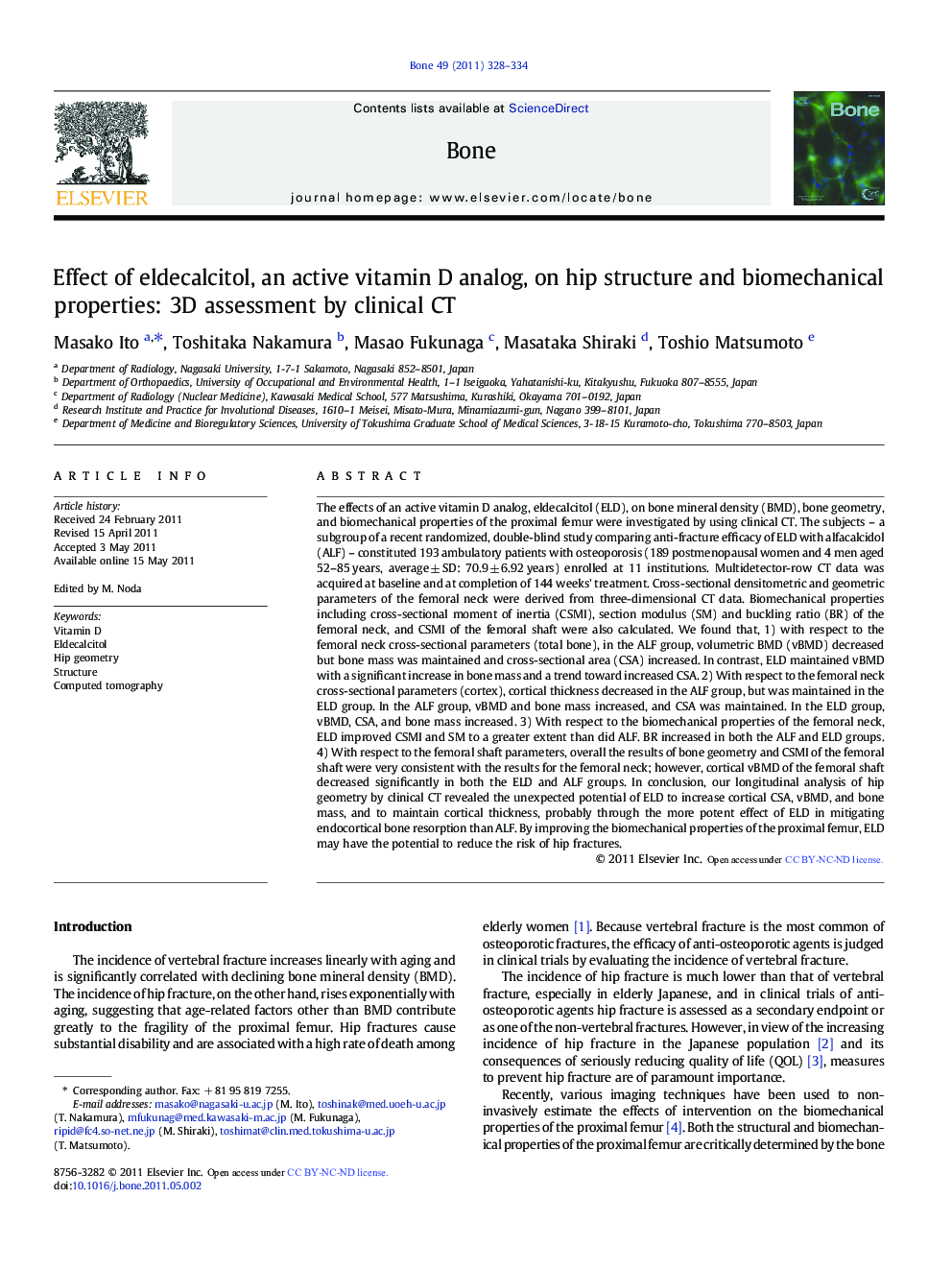| Article ID | Journal | Published Year | Pages | File Type |
|---|---|---|---|---|
| 5891794 | Bone | 2011 | 7 Pages |
The effects of an active vitamin D analog, eldecalcitol (ELD), on bone mineral density (BMD), bone geometry, and biomechanical properties of the proximal femur were investigated by using clinical CT. The subjects - a subgroup of a recent randomized, double-blind study comparing anti-fracture efficacy of ELD with alfacalcidol (ALF) - constituted 193 ambulatory patients with osteoporosis (189 postmenopausal women and 4 men aged 52-85 years, average ± SD: 70.9 ± 6.92 years) enrolled at 11 institutions. Multidetector-row CT data was acquired at baseline and at completion of 144 weeks' treatment. Cross-sectional densitometric and geometric parameters of the femoral neck were derived from three-dimensional CT data. Biomechanical properties including cross-sectional moment of inertia (CSMI), section modulus (SM) and buckling ratio (BR) of the femoral neck, and CSMI of the femoral shaft were also calculated. We found that, 1) with respect to the femoral neck cross-sectional parameters (total bone), in the ALF group, volumetric BMD (vBMD) decreased but bone mass was maintained and cross-sectional area (CSA) increased. In contrast, ELD maintained vBMD with a significant increase in bone mass and a trend toward increased CSA. 2) With respect to the femoral neck cross-sectional parameters (cortex), cortical thickness decreased in the ALF group, but was maintained in the ELD group. In the ALF group, vBMD and bone mass increased, and CSA was maintained. In the ELD group, vBMD, CSA, and bone mass increased. 3) With respect to the biomechanical properties of the femoral neck, ELD improved CSMI and SM to a greater extent than did ALF. BR increased in both the ALF and ELD groups. 4) With respect to the femoral shaft parameters, overall the results of bone geometry and CSMI of the femoral shaft were very consistent with the results for the femoral neck; however, cortical vBMD of the femoral shaft decreased significantly in both the ELD and ALF groups. In conclusion, our longitudinal analysis of hip geometry by clinical CT revealed the unexpected potential of ELD to increase cortical CSA, vBMD, and bone mass, and to maintain cortical thickness, probably through the more potent effect of ELD in mitigating endocortical bone resorption than ALF. By improving the biomechanical properties of the proximal femur, ELD may have the potential to reduce the risk of hip fractures.
Graphical abstractDownload high-res image (160KB)Download full-size imageResearch highlights⺠A new vitamin D analog, Eldecalcitol, on hip geometry and biomechanical properties by clinical CT, in comparison with Alfacalcidol. ⺠Eldecalcitol increases cortical area, mineral density, and bone mass, and maintains cortical thickness. ⺠Eldecalcitol is also more potent in mitigating endocortical bone resorption than Alfacalcidol. ⺠By improving the biomechanical properties of proximal femur, Eldecalcitol may have the potential to reduce the risk of hip fractures.
